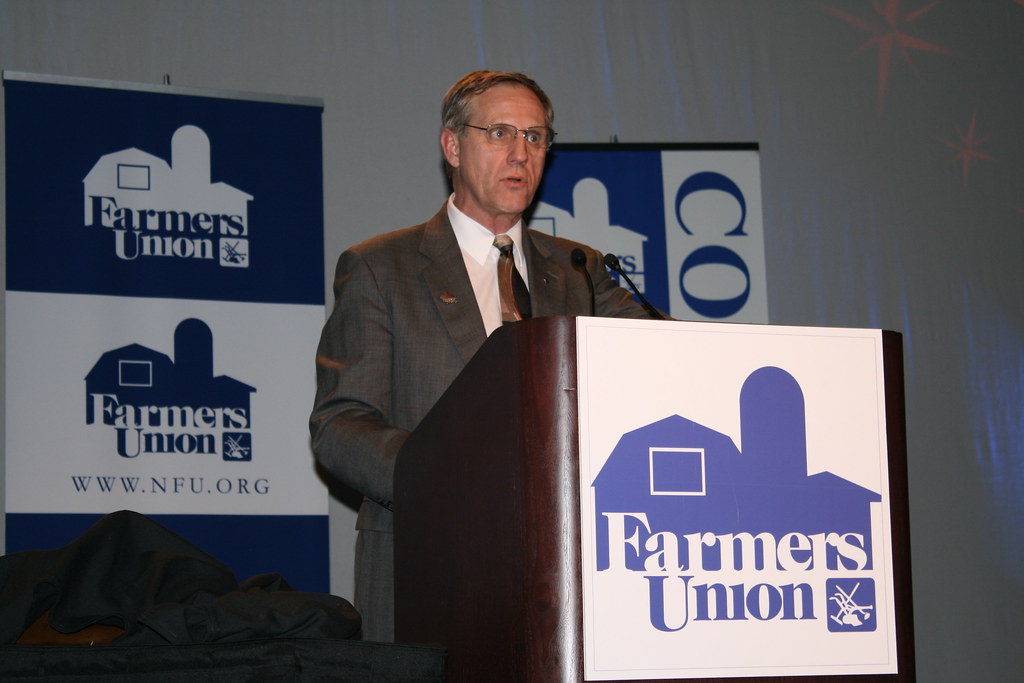Dear Commons Community,
The Chronicle of Higher Education’s senior writer, Goldie Blumenstyk, shared her time at a Forum on Higher Education Innovation. Her interview with Purdue President Mitch Daniels is most interesting. Here is her account of her takeaways.
The things you learn at a forum on innovation.
Enrollment growth at Purdue University Global isn’t as robust as Purdue expected, and building brand recognition for the renamed online institution it acquired in 2018 isn’t a snap, either.
Those were some of the nuggets that Mitch Daniels, president of Purdue, shared publicly when I interviewed him onstage at a forum on innovation for university leaders held on Monday in Indianapolis. “We’re not achieving the growth that we thought we might,” he said of the operation.
Despite the inherent limitations of events like this — I had only about 20 minutes to question Daniels, and a lot of ground to cover — I came away from the day of panels and talks with some new information and several new perspectives. They include some thoughts on the leadership necessary to ensure colleges make better use of all that data they’re gathering on students. (More on that below; but as Jennifer Engle of the Bill & Melinda Gates Foundation put it, it starts with “a really motivated provost with a spreadsheet.”)
Other takeaways from the day.
From my “fireside chat” with Daniels:
Nationally, overall enrollment in higher ed has been slowing, especially (as readers of The Edge already know) in online master’s degrees. Purdue’s trends reflect that, although Daniels said enrollment among students seeking bachelor’s and master’s degrees has been stronger than for those looking to earn a certificate or associate degree. Yet when Purdue first announced this deal, Daniels talked often about how it would give the university a vehicle for reaching that latter population.
He didn’t share specific numbers, and the information the university supplied me on deadline — overall enrollment of 29,000 and “double-digit growth in the bachelor’s and master’s” — wasn’t enough for me to really understand the interplay with the associate and certificate programs. I’ll ask for more and pass along what I learn. Purdue Global leaders said they didn’t expect this overall market slowdown. Meanwhile, Daniels noted some advantages in those enrollment wrinkles. Students taking those upper-level degrees tend to have better rates of retention and graduation. “That’s good for them and good for the business,” he said.
We also talked about Purdue’s tuition freeze, which began in 2013 and is slated to run until at least 2021. One way the university has been able to afford it is by getting bigger and enrolling more out-of-state and international students, who pay more to attend. Should other selective institutions be doing that too? He demurred on that one, but said that for Purdue, as a land-grant institution, the decision was easy. “That’s the assignment.”
On the topic of colleges trying new things, Daniels, a former governor of Indiana and businessman, was more provocative. He described higher education as “the most reactionary culture I’ve seen.” The reason certain institutions get tagged as “innovative” is because many others don’t seem to change much. In higher education, he quipped, “you don’t have to do much to look like Thomas Edison.”
As for the growing resentments toward colleges, especially among people who identify as Republicans, Daniels offered little comfort. “These things are not without foundation,”
he said, noting the public’s suspicion that colleges “haven’t offered convincing proof that students are learning and growing” at levels commensurate with the cost. To that list, he added the “lopsided” liberal bent of the academy and concerns about the abridgement of free speech on campus.
“I’m not surprised people look askance,” he said, but added, “We can’t leave it there. This is one of the most precious assets this nation has.” Getting defensive isn’t the solution, Daniels said, and higher-education leaders need to do more self-examination. When companies fall out of favor, he said, “usually there’s something about that product that needs improvement.”
One more thing: I asked Daniels if he regretted not running for president. His long answer was all about how skipping the race in 2012 had allowed him to complete his gubernatorial term on a high note and paved the way for him to become a university president. So, no, he said, “No regrets, and thanks for asking.” But I still wonder if his first, off-the-cuff reply to my question — “Don’t you read the newspaper, Goldie?” — was more telling.
From a conversation on making data more useful:
For all the data colleges collect these days on students — based on their activities in learning-management systems, engagements with campus administrative and advising systems, and even swipes of their student IDs at extracurricular events — making sense of it all for the betterment of students is still more haphazard than it should be.
Jennifer Engle, the deputy director for data, measurement, learning, and evaluation at the Gates Foundation, said the problem is not so much a lack of willingness to use the data but “a huge capability issue in our field” because many colleges have yet to develop the in-house expertise to use the data effectively. It helps, she said, when a provost shows up to a meeting, data in hand, “saying ‘What are we going to do?’’’ But colleges need more than that. They need more people from academic and administrative departments with the data literacy to take the information and use it to pinpoint problems and solutions.
“We spend a lot of time identifying, collecting, and cleaning up the data,” she told me, and “then we don’t have the capacity to use it.”
Even as I wrote down what Engle was saying, it struck me that this might sound like a commercial for Salesforce, the company that sponsored the invitation-only Innovation Leadership Forum held at event space at the Indianapolis Motor Speedway, where dessert included the chance for participants — me included — to take a 100-mph spin around the track. (Closed course, professional driver, at speeds nothing close to what they hit at the 500, but seriously cool, nonetheless!) Still other companies also sell data-analysis software to colleges, and I think the issue Engle raised is more than legitimate and merits attention in its own right, considering how pervasive these student-data systems are becoming.
And software isn’t any kind of magic bullet. As Engle said, “It’s technology, it’s people, it’s leadership.”
Colleges have some of this expertise in their institutional research offices, Engle noted, but often “they’re buried under compliance reporting” and don’t have the time or the mandate to do the kind of analysis that can help home in on a problematic administrative or teaching practice that may be impairing student success.
I was intrigued by one emerging solution that Engle told me about: “data fellows.” These are people trained in data analytics who embed in departments so they get to understand the nuances of the challenges students are facing. Already, a few colleges, including Miami Dade College, have tried the idea. And a group at Harvard that has used this practice at elementary and secondary schools, the Strategic Data Project, has just won a federal grant to explore the idea of expanding it into higher education.
Two other things I heard that seemed relevant and thought-provoking:
Alana Dunagan, a senior research fellow at the Christensen Institute, on things higher ed should stop doing: “I really wish we would stop talking about free college,” she said. The idea is unaffordable, she said, and a distraction from “rethinking our higher education system” to be more effective.
Dane Linn, vice president for immigration, work force, and education at the Business Roundtable, on employers and the college connection: Higher education gets a bad rap for its supposed failure to understand the needs of employers, but those human-resource officers at companies aren’t necessarily any better, Linn said. Many employers still do a poor job of articulating the real competencies they’re looking for, he said. They’re “using some of the same hiring practices they’ve used for years.”
Data, career connections, and online education are all topics I’ve been thinking a lot about these past few weeks, because to me they’re all elements of the changing higher education landscape I’ve been covering here in this newsletter. They’re also what I reflected on when writing a section of a Chronicle report coming in September on, what else, innovation. Now I’m wondering, what would you add to that mix? What trends reflect changes you’ve seen in higher ed? What trends are still missing? Please send me your thoughts so I can share them in a future newsletter.
Book corner: How automation will fuel global inequality.
With Hong Kong democracy protests and trade wars with China all over the news, a book suggestion I heard this week from the new president of the University of Colorado system seemed especially apt. The book is AI Superpowers: China, Silicon Valley and the New World, by Kai-Fu Lee, an expert in AI, venture capitalist, and former president of Google China.
Mark Kennedy, the Colorado president, told me about the book as part of a broader dinner conversation we were having before the forum about the potential impact on the American economy of the so-called “fourth industrial revolution.” (We both agreed the automation it entails presents a real risk of a further divide between the educational haves and the have-nots.)
As for the book, Kennedy told me he found the author overly optimistic about the influence of China and about technology. But even if “he’s at least half right” (Kennedy thinks he is), that’s a cause for attention in the academy and society writ large.”
Thank you Ms. Blumenstyk for this recap.
Tony








